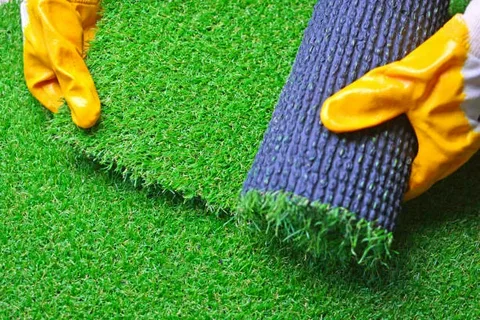A healthy, vibrant garden doesn’t just happen by chance—it’s the result of strategic planning, careful maintenance, and the right materials. Whether you’re tending to a classic green lawn or dreaming of a colourful wildflower meadow, your choices in turf and nourishment play a vital role in your success. In this guide, we’ll explore how using premium Lawn fertilisers and embracing Wildflower Turf can dramatically enhance the health and beauty of your outdoor space—bringing nature closer to home.
The Backbone of Lawn Health: Understanding Lawn Fertilisers
Lawn fertilisers are often underestimated in their impact, yet they serve as the lifeblood for any healthy turf. Fertilisers supply essential nutrients such as nitrogen, phosphorus, and potassium—each playing a unique role in growth and resilience.
Why Fertilisers Matter
- Nutrient Restoration: Grass depletes soil nutrients over time. Fertilisers restore these vital elements.
- Greener Grass: Nitrogen-rich formulas encourage that deep green hue we all associate with a well-kept lawn.
- Stronger Roots: Phosphorus supports root development, which is key for drought resistance and durability.
- Improved Disease Resistance: Potassium helps your grass stand up to diseases and pests.
- Seasonal Growth Management: Different blends suit different times of the year, from spring jumpstarts to autumn root strengthening.
Types of Lawn Fertilisers
The Lawn fertilisers available today come in various formats, tailored to specific needs:
- Granular Fertilisers: Easy to spread and offer slow-release benefits.
- Liquid Fertilisers: Fast-acting solutions ideal for visible results within days.
- Organic Fertilisers: Eco-friendly and safe for children and pets.
Choosing the right fertiliser for your turf depends on the lawn’s current health, the season, and whether you’re targeting issues like weed control or moss reduction.
Wildflower Turf: A Naturalistic Alternative to Conventional Lawns
While a lush green lawn is a traditional goal, more homeowners and landscapers are leaning into biodiversity with Wildflower Turf. This approach not only brings a rustic, charming aesthetic but also supports local ecosystems and pollinators.
What is Wildflower Turf?
Wildflower turf is a pre-grown mat that includes a mix of wildflower seeds and grasses, cultivated to ensure a high establishment rate when transplanted. Unlike simply sowing seeds, this method offers more control and quicker results.
Benefits of Wildflower Turf
- Biodiversity Boost: Encourages bees, butterflies, and birds to thrive in your garden.
- Low Maintenance: Once established, wildflower turf requires significantly less mowing and watering.
- Eco-Friendly: Reduces the need for chemical treatments and conserves water.
- Visual Appeal: Blooms in a variety of colours and textures, changing with the seasons.
By adopting Wildflower Turf, you transform your outdoor space into a living tapestry that not only looks good but does good.
Combining Both Approaches: The Best of Both Worlds
There’s no need to choose between a manicured lawn and a meadow of wildflowers. Many homeowners now section their garden into zones—using lawn fertilisers in the high-traffic areas and cultivating wildflower turf in corners or borders.
Tips for Seamless Integration
- Edge Control: Use decorative borders or paths to define the transition between lawn and wildflower areas.
- Complementary Fertilising: Fertilise the lawn areas while keeping nutrient levels low in wildflower sections to prevent invasive grass from taking over.
- Seasonal Synchrony: Time your turf installations and fertilising schedules to avoid overlap that could disrupt growth cycles.
Best Practices for Lawn Fertilising
To get the most out of your lawn fertilisers, consider the following:
- Test Your Soil First: Understanding your soil’s pH and nutrient levels helps you select the ideal fertiliser.
- Apply During Active Growth: Spring and autumn are the best times for fertilising.
- Water Wisely: Light watering after fertilising helps nutrients absorb without washing them away.
- Avoid Over-Fertilising: Too much fertiliser can scorch grass or encourage thatch buildup.
Products like those found at Turffit’s lawn fertiliser range provide targeted nutrition for every lawn condition, from patchy and pale to robust and overgrown.
Establishing Wildflower Turf: A Step-by-Step Guide
Creating your wildflower haven is straightforward when using high-quality wildflower turf:
- Prepare the Soil: Remove existing grass and weeds, then rake and level the soil.
- Install the Turf: Lay the wildflower turf directly onto moist soil.
- Water Thoroughly: For the first few weeks, water regularly to help the roots establish.
- Be Patient: Wildflower turf may take a few months to bloom fully but will reward you with lasting beauty and ecological value.
For expert advice and wildflower blends, Turffit’s wildflower planting guide offers insights into selecting and caring for your meadow.
Creating a Sustainable Garden
A lawn isn’t just for looks—it’s part of your personal ecosystem. The right balance of fertilised green space and flourishing wildflowers can significantly improve your garden’s environmental footprint.
- Cut Carbon: Wildflower areas require less mowing.
- Support Wildlife: Native plantings provide habitat and food sources.
- Conserve Resources: Less watering and fewer chemical inputs are good for the planet and your wallet.
Conclusion
Creating a garden that’s both beautiful and sustainable doesn’t have to be complicated. By choosing the right lawn fertilisers and incorporating wildflower turf, you can transform your outdoor space into a lush, living landscape that serves both function and form. Whether you’re aiming for the pristine uniformity of a green lawn or the buzzing biodiversity of a wildflower patch, Turffit offers the tools and guidance to bring your vision to life.

